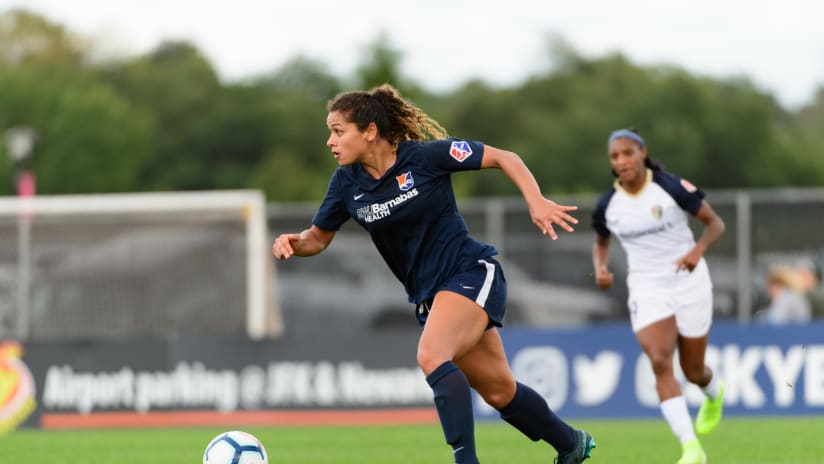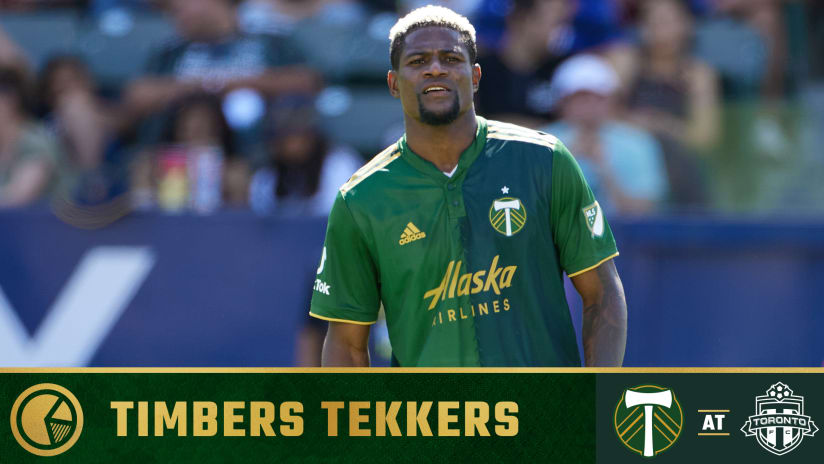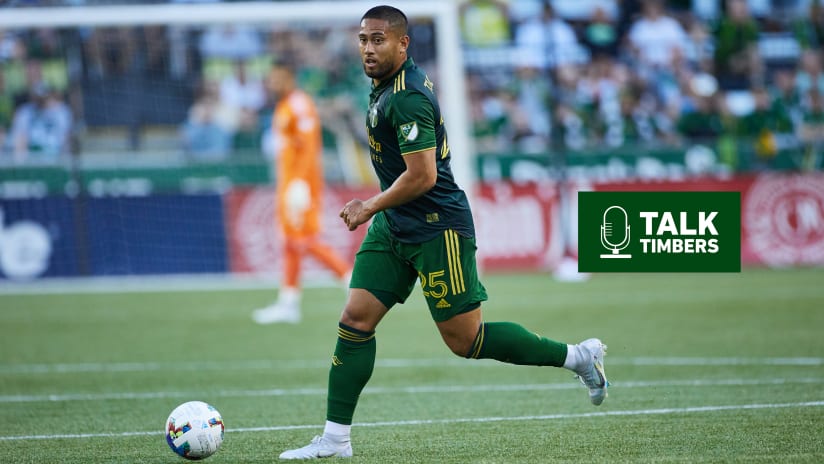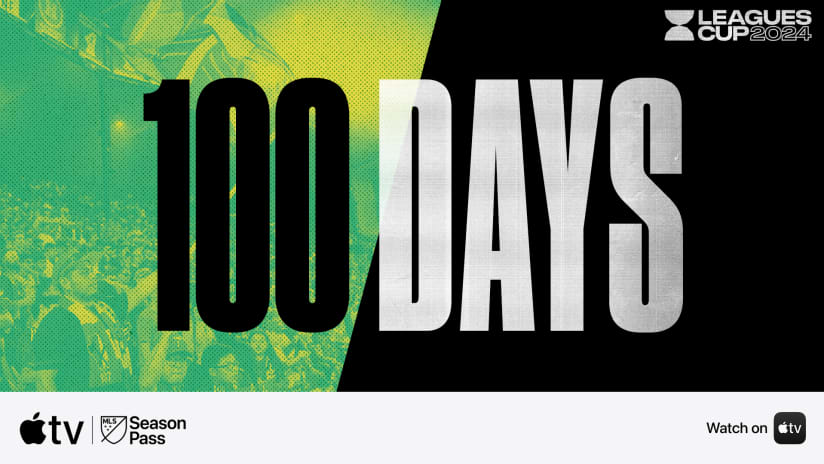Among Portland Thorns FC's biggest concerns over the last two years has been their inability to matchup with the league’s two-time defending champions, the North Carolina Courage, albeit in a very specific way. While the Courage’s advantages over most of the NWSL are by no means limited to one area, their decisive edge against the Thorns has been in the matchup between the teams’ midfields: a problem that transcended mere performance and tactics, and forced the the Thorns’ decision makers to wrestle with a more fundamental question: Does Portland have the right type of players to compete with the Courage?
One word, there, deserves extra emphasis: type. It's never really been a matter of if the Thorns had enough talent. When the names across the backs of your central three read Brynsjardottir, Horan, and Sinclair, it would be mildly greedy to imply you're starved for choice. But as the likes of North Carolina’s Crystal Dunn and Debinha streaked into spaces between your backline and midfield, and as the Courage's four-player system in the middle also gave those standouts a numerical edge, the Thorns’ defining question became even more pertinent. What type of player will not only bridge the gap with North Carolina but, as you see rich, deep, talented midfields also assembled in Chicago and Washington, help Portland manage the changing landscape of the NWSL?
Enter Raquel Rodríguez, who arrives from Sky Blue at the cost of two significant pieces. Yet when you consider the traits a midfielder needs to compete at the NWSL's highest levels (and how few players possess enough of those traits), players like the Costa Rican international seem pretty rare. And rare things tend to cost a lot to bring on board.
The first of those traits is her skill level, or quality with the ball – a quality that’s allowed the 26-year-old to play further up the field with her national team, where she has 40 goals in 70 career appearances. At times left isolated, to fend for herself, there, Rodríguez has developed into a player who can thrive in her hold-up play and distribution, as well as her scoring. In the NWSL, though, those qualities get used in midfield, where her strength in possession makes it difficult to take her off the ball, whether she’s playing in advanced or central roles. Between her strength, distribution, and ability to dictate the game from multiple places on the field, Rodríguez has shown the ability to be a game’s defining influence, even if it’s not in a typical playmaker’s pose.
It’s those physical qualities, though, that helps make Rodríguez particularly suited for Portland, and their predicament. Various players around the NWSL can add skill to your midfield. Others, too can keep up with the likes of Dunn and Debinha, to the extent you actually can. And strength? Well, the Thorns have had plenty of that in midfield. A player that combines all those skills, though, is a player few teams have. On those occasions you see Rodríguez lay a perfectly weighted ball out to a streaking right back, it’s easy to forget she may have close the space on an opponent, driven them off the ball, turned in possession before, with her second or third touch, playing her teammate into space, in stride. That’s the profile Rodríguez is bringing to Portland.
Her versatility, too, becomes a virtue in a world where, though Christine Sinclair has played as an attacking midfielder for the last two years, it’s unclear where the Portland captain will be deployed next season. Is Lindsay Horan going to continue to be a box-to-box “eight” in midfield? What is Gabby Seiler’s long-term position, and if Angela Salem comes back this season, do the Thorns have a player destined to sit, ball-win, and distribute from the more defensive “six.” Whatever arrangement those players take, Rodríguez is capable of filling in the other spaces, whether it be in a box-to-box role, a more advanced playmaker, or even as a supporting striker. There is no one answer to “where does the newest Thorn play?”
That, too, addresses a concern that comes with most acquired talents. It’s one thing to know a player’s profile and have an idea of how, in an ideal situation, the player would be deployed. It’s another to see your team’s preexisting organism and know whether, without disrupting what’s already working, a new part and be inserted. One of the virtues of Rodríguez, though, is that she doesn’t have to be one, specific thing. At multiple levels of the field, her history suggests that, if need develops in Portland’s scheme, she’ll be able to meet it.
All of this, too, comes at a relatively young age. Now 26, Rodríguez isn’t likely to develop into an entirely new player any time soon, but she is at the age where the virtues of her experience will, for years to come, offset any tax a decade-plus of soccer will exact on her. Though in the departures of Emily Sonnett, Caitlin Foord and Midge Purce, Portland seemed to be losing parts of the team’s next core, Rodríguez is still young enough to be integral to that group. And it should go without saying that the player Portland selects with the first pick in next week’s draft will be even well suited to contribute long into the future.
All of Rodríguez's strengths, though, comes in a player with an uncommon amount of experience. She has been training with her national team since she was an 11-year-old. she debuted at senior level in 2008, has accumulated 70 caps, and has played in a World Cup. She was the MAC Hermann Trophy winner as collegiate soccer’s best player during her last year at Penn State, and in her first professional season (2016), she was the NWSL’s Rookie of the Year. Four years of NWSL experience feels between a lifetime and nothing, but the wealth of time Rodríguez put in to get to Penn State and Sky Blue makes her an especially experienced 26-year-old.
On top of all that is her pure availability. The paragraphs, above, may just feel like a post expounding on a new player’s qualities, and under the heading of that new player’s website, that expounding may feel hagiographical. Fair enough, but in all those qualities, Rodríguez does have undeniable value. Whether you feel that value is as high as I do, it is still rare that one midfielder be able to contribute in all those ways. Horan is another that fits those labels, and while it would be excessive to start, skill by skill, comparing Rodríguez and Horan, how many midfielders in the NWSL are truly that versatile? Form that list – and it won’t take long – and you see why Rodríguez was such a priority for Portland.
Those priorities, though, had two big costs, the first of which was Midge Purce. Purce’s place with the United States national team in Tampa, Florida, right now says everything you need to know about her value, but if more context is needed, now her eight goals in 2019 placed her in the NWSL’s top five in that category, a spot she achieved in her first full-time stint as a starting forward. Over the course of three years, the Harvard product has gone from a debut season in Boston to fighting for a spot at right back in Portland, to a player whose contributions at a different position (forward) were essential to her team’s ability to survive their World Cup absences. What's more, Purce’s steady, self-driven improvement makes it easy to imagine another significant step forward next season; and, after that, another.
As much as Purce’s 2019 breakout was rightly celebrated, the underpinnings were slightly ignored. Because the 24-year-old’s potential had been evident since she debuted with Boston as a first-round draft pick in 2017, her eight-goal season was more exciting than surprising. But Purce didn’t enter her third campaign with any guarantees of playing time, and after working through early-season injuries, she had to win a place among Portland’s starters. Even after success during the team’s World Cup absences, a spot in the team’s XI wasn’t assured, with both Foord and Hayley Raso due back for the season’s most important months. Yet for most of that time, Purce retained her place in the team’s XI, and while Mark Parsons’ quest for late-season answers eventually changed his lineup, Purce deserves recognition for the battles she won. There were things she had to earn before earning her goals. All of those were testaments to her work.
That work, though, deserves an opportunity. She should get that at Sky Blue. Whether her national-team path means that opportunity is at forward or right back, those chances are more likely to come in New Jersey than Oregon. The Thorns are in a position where they have to make tough choices about players like Sonnett, Foord and Purce – players whose values allow them to acquire quality pieces that can reshape their roster. Sky Blue is in a position to use one of those pieces to acquire the potential of Purce.
Combine Purce’s value with that of a first-round pick, and Portland’s deal with Sky Blue marks the second big price the Thorns have paid today. At this point in the team’s success cycle, though, these are the costs that have to be paid. Some areas needed change. Other areas allow the team to deal from depth. In both cases, rare targets required steep prices to bring them to Portland.














